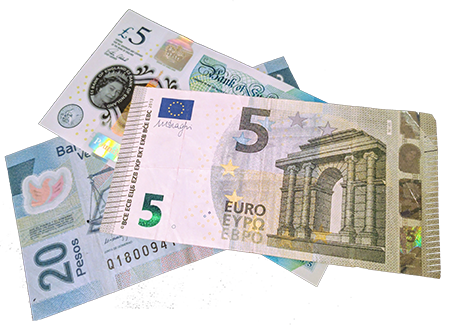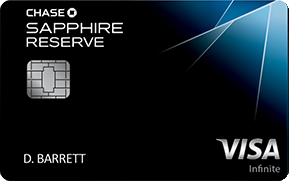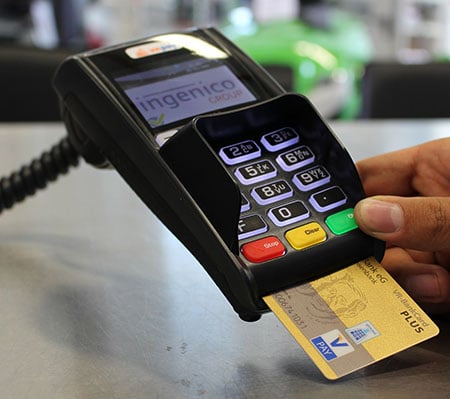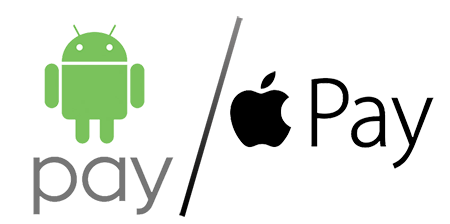Whether traveling by land or sea, paying for things can be a bit different in different countries. Years ago, you simply changed currency at the purser’s desk on your cruise ship, but this is rarely done anymore. Technologies and customs can make the simple process of paying for a meal, cab ride, or souvenir a bit confusing, but we’ve got some tips to keep things simple and more importantly, save you some time or even money.
Paying with Cash
Cash is king as the saying goes, and you’ll be hard pressed to find anything other than perhaps car-rental where you can’t pay with cash. What currency though? Well, if you’re traveling to popular destinations in the Caribbean you’ll find that most destinations are happy to take US dollars. If you get a bit off the beaten path then you may want some local currency. In certain destinations, such as Cuba, having the local currency is much more important. (You can read about how to pay for things in Cuba by clicking here). Outside the Caribbean, for cruises visiting Canada, South America, Europe, or Asia, you’ll also need local currency, as US dollars are generally not accepted.

Changing Currency
Changing currency may seem intimidating if you’ve not done it before, but aside from the occasional bit of math (we don’t like it either), you’ll find the process is quite simple. You’ve likely seen or heard of currency conversion kiosks in airports, shopping malls, or in other well-traveled areas – and you can certainly change currency here, but the fees they charge are often quite high. One option may be as close as your bank, as many can change common currencies for you, but it’s important to contact them first to see what they have on hand, when they can get currency, and how much they charge to change money, as these factors can vary from bank to bank and even branch to branch. If you belong to a credit union they’re generally a bit friendlier with fees, but you should still inquire first.
In the event you arrive in port and need local currency but didn't stop somewhere, then you’ve got a few options. Local banks in touristy areas will often change currency even for non-account holders, and their fees are often lower than currency exchange kiosks. Another option that may help you avoid those kiosks is an ATM. If you can use your ATM in the country you’re visiting it can often be very simple and inexpensive to get some local currency this way, but be sure you know what fees are charged by your bank, and remember that you’ll want to change any leftover money back before leaving.
Credit Cards
More and more businesses all over the world accept credit cards, and this can be an easy way of avoiding the logistics of currency exchange, or at least the number of times you hand a cashier a fistful of coins and wonder how to say, “how many is this?” in French. If using your credit card in another country be sure you check with your card issuer to notify them that you’ll be traveling and find out about any fees or restrictions associated with international use of your account. Some cards do not carry international transaction fees, while others do.
Note: Check out this CreditCards.com piece where we talk about how to prevent issues when using your credit card on a cruise!

Credit Card Fees
In some touristy parts of the Caribbean, especially in Mexico, some merchants will by default charge visitors in US dollars, thinking it’s easier and preferable, especially for those using credit cards that carry international transaction fees. Be sure to check the establishment’s “exchange rate” before doing this. In some cases, you’ll find these rates to be very fair, potentially better than bank rates. Other times however they’re greatly inflated. If for example, the day’s rate is $18.07MXN to $1USD but a restaurant tells you (often on a sign, Mexico has quite good consumer protection laws) that they change at $16MXN to $1USD just ask to be charged in pesos, which only requires them hitting a button on their credit card terminal. In this situation, even if you pay a 3% fee for this transaction you’ll be far ahead of the game, saving over 10%.
Chip & PIN, Chip & Sign, Chips & Salsa, Tap to Pay…
In the last several years, merchants and credit card companies in the US have started to adopt “chip & sign”, a variant of a standard called EMV, which started in 1984 and has long been the standard in much of the world for well over a decade. In these other countries however, they use “chip & PIN”, where instead of signing for purchases, you enter a PIN on the terminal. I mention this because using your credit card in many places will be different, especially at restaurants. Whereas you’re used to handing over your card in the US, in many other countries your server will bring over a small wireless terminal into which you insert you card and enter a tip amount if applicable. Often, because America (and a handful of other destinations) are outliers in not adopting “chip & PIN, servers won’t have a pen ready as they’re used to customers entering in their PIN rather than needing to produce an extra copy of the receipt and get your signature.
Quick fact: France has cut card fraud by more than 80% since introducing EMV ("chip & PIN") in 1992!

The good news is that if you want to avoid being “that tourist” when it’s time to enter your nonexistent PIN, there is an easy solution that can actually save you some time and work. Another technology common in most other countries is “tap to pay”. While some cards in the US allow users to simply hold their card to the machine for a brief moment, most US cards don’t have this ability. If you have a modern Android or iOS smartphone however, you likely have the ability to use Apple Pay or Google Pay, and I’ve yet to see a terminal which accepts “tap to pay” (most of them in Europe) which doesn't work with Apple Pay or Google Pay. This means you can simply tap your phone, it works in less than a second, and because you have to unlock your phone, no signature is needed. Another great advantage to paying like this when abroad? You can easily track all your trip expenses on your phone, just be sure to set up the app before you head out on vacation.

Wrap Up
In most situations, paying for good and services while abroad is not terribly challenging, but it’s good to be armed with information to make things go as smoothly as possible. When in doubt, you can always ask a cruise ship officer or crew member, hotel staff, or even just a local. No matter how you plan to pay or where you’re going, always be aware of your surroundings, let your bank know of your plans, and leave a credit card or some cash back at your hotel or on your ship, just in case you and your wallet end up taking different vacations.
Have tips or questions about changing currency or using credit cards abroad? Let us know in the comments below, or reach out on Facebook or Twitter!

